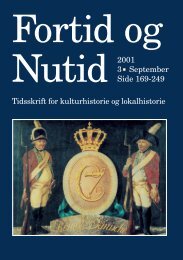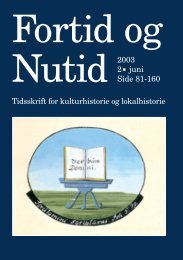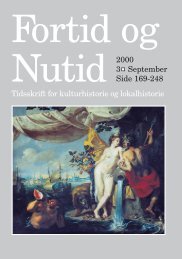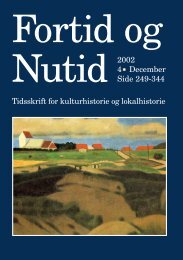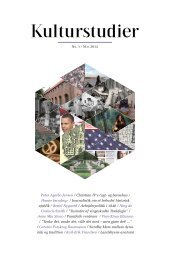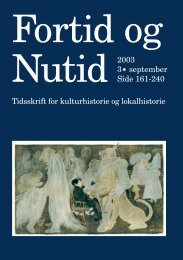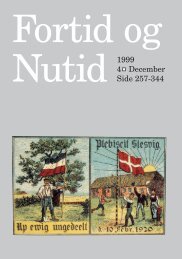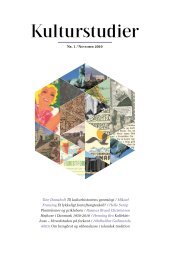Læs hele tidsskriftet (PDF) - Kulturstudier
Læs hele tidsskriftet (PDF) - Kulturstudier
Læs hele tidsskriftet (PDF) - Kulturstudier
You also want an ePaper? Increase the reach of your titles
YUMPU automatically turns print PDFs into web optimized ePapers that Google loves.
<strong>Kulturstudier</strong> Nr. 2, 2011 The reconfigured body 7/15<br />
ethically acceptable to use the pig in medical trials, but this dehumanization<br />
also came to function as a defence of a certain way of defining humaneness.<br />
In identifying the difference between the human body and the cells, tissue and<br />
organs from the pig, the unknown became mouldable and manageable and thus<br />
the possibility of using the pig as a future organ supply for the human body was<br />
created. 18 The pig’s body was recharged with new and ethically acceptable values<br />
that made it possible to use the cells, tissue and organs in the human body.<br />
The pig as a factory<br />
Even if the human/animal relation became mouldable and manageable by pointing<br />
out the differences and similarities between the human, the pig and the nonhuman<br />
primates – transgenic and cloned animals would subsequently change<br />
this human/animal relation. Much of the hope for success with xenotransplantation<br />
in the 1990s was abandoned in favour of producing transgenic animals, and<br />
later cloned animals, in an attempt to get control of immunosuppression. The<br />
Cambridge based company Imutran, and the director of research David White,<br />
injected human DNA into fertilized sow eggs and a transgenic pig was born in<br />
1992. In 1995, the USA company Nextran also developed transgenic pigs. The<br />
Edinburgh based company PPL Therapeutics, who cloned a sheep named Dolly,<br />
also cloned the first pigs by the beginning of the year 2000. More companies succeeded<br />
in cloning pigs in 2001 and 2002. 19 In order to understand these technological<br />
changes from a cultural perspective, it is essential to focus on the dissolution<br />
of boundaries between human/animal, as well as between organic/machine.<br />
The redefinition of the human and the humaneness can be discussed through the<br />
commoditization of the transgenic and cloned animals, a perspective that will be<br />
discussed in relation to the anthropologist Sarah Franklin’s discussion on how<br />
cloning became a genetic capital. 20<br />
Franklin points out that it is not Dolly the sheep, seen as an animal, that is<br />
the source of the genetic capital, but the knowledge of nuclear transfer technology.<br />
The knowledge of an animal’s reproduction has shifted to the companies<br />
that can make a profit. Furthermore, the cloning has altered the commodifying<br />
genealogy from a linear to a non-linear relation concerning the animal’s reproduction,<br />
where its mother can genetically be its sister. 21 The sociologist Richard<br />
Twine clarifies this last point when he writes that: “Capitalization speculates for<br />
opportunity through the refutation of previously naturalized evolutionary time<br />
18 Åkesson 2000.<br />
19 Brown and Beynon-Jones 2010; Hansson 2003; Persson and Welin 2008.<br />
20 Franklin 2007.<br />
21 Franklin 2007.<br />
148



